- Choosing the Right Location for Your Gardenia Jasmine
- 1. Sunlight
- 2. Temperature
- 3. Humidity
- 4. Soil Drainage
- 5. Shelter from Wind
- 6. Proximity to Water Source
- Soil Preparation for Gardenia Jasminoides
- 1. Choose the Right Soil Type
- 2. Test the Soil pH
- 3. Amend the Soil
- 4. Improve Drainage
- 5. Add Organic Matter
- 6. Mulch the Soil Surface
- 7. Regular Soil Maintenance
- Planting Gardenia Jasmine: Step-by-Step Guide
- Gather the necessary materials
- Choose the right location
- Prepare the soil
- Dig a hole
- Plant the gardenia jasmine
- Water thoroughly
- Mulch the area
- Monitor and care for your plant
- In conclusion
- Watering and Fertilizing Gardenia Jasminoides
- Watering
- Fertilizing
- Pruning and Trimming Gardenia Jasmine
- Why Prune Gardenia Jasmine?
- When to Prune Gardenia Jasmine?
- How to Prune Gardenia Jasmine?
- Trimming Gardenia Jasmine
- Common Pests and Diseases of Gardenia Jasminoides
- Pests
- Diseases
- Troubleshooting: Common Issues and Solutions for Gardenia Jasmine
- 1. Yellowing Leaves
- 2. Leaf Drop
- 3. Bud Drop
- 4. Pest Infestation
- Q&A:
- What is Gardenia Jasmine?
- How do I grow Gardenia Jasmine?
- What are the ideal growing conditions for Gardenia Jasmine?
- How often should I water Gardenia Jasmine?
- Why are the leaves of my Gardenia Jasmine turning yellow?
- How can I propagate Gardenia Jasmine?
- Video: How To Make Gardenia Plant Produce More Buds And Blooms All Year Round
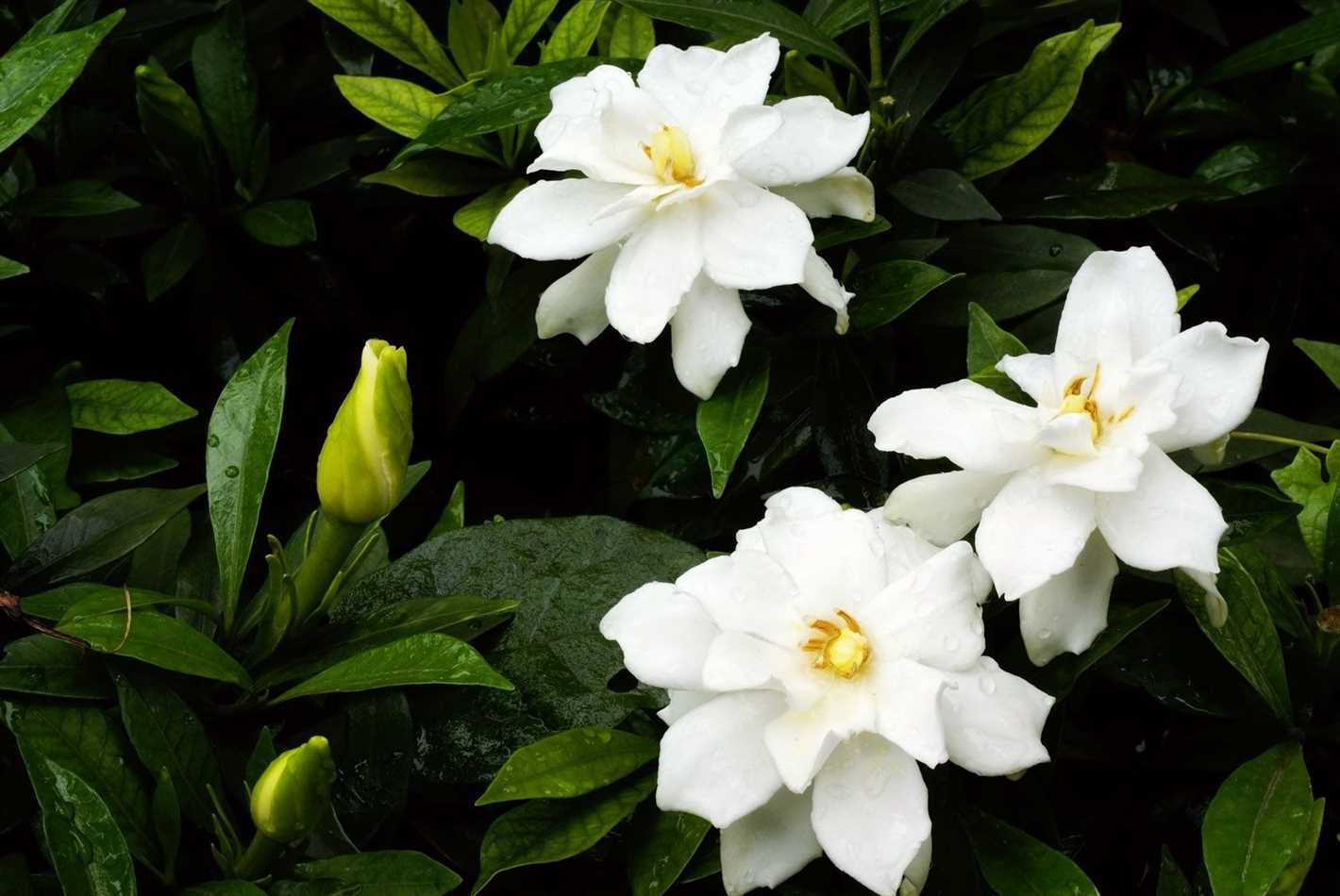
Gardenia jasminoides, commonly known as gardenia jasmine, is a beautiful flowering plant native to Asia. With its fragrant white flowers and glossy green leaves, gardenia jasmine is a popular choice for gardens and indoor cultivation. This guide will provide you with all the information you need to successfully grow and care for gardenia jasmine.
First and foremost, gardenia jasmine requires a well-draining soil and a location with plenty of bright, indirect sunlight. It is best to plant gardenia jasmine in acidic soil with a pH between 5.0 and 6.5. When planting, make sure to loosen the soil and add compost to improve drainage. Adding peat moss or pine bark mulch to the soil can also help maintain acidity.
When it comes to watering, gardenia jasmine prefers to have consistently moist soil. However, it is important not to overwater as it can lead to root rot. Water the plant thoroughly and allow the top inch of soil to dry out before watering again. To maintain the high humidity that gardenia jasmine requires, mist the leaves or place a tray of water near the plant.
Gardenia jasmine is a heavy feeder and requires regular fertilization to thrive. Use a fertilizer specifically designed for acid-loving plants, following the package instructions for application rates and frequency. It is best to fertilize gardenia jasmine during the growing season, typically from spring to fall, and reduce or stop feeding during the winter months.
Choosing the Right Location for Your Gardenia Jasmine
Gardenia Jasminoides, also known as Gardenia Jasmine, is a beautiful flowering plant that requires the right location to thrive. Here are some factors to consider when choosing the perfect spot for your Gardenia Jasmine:
1. Sunlight
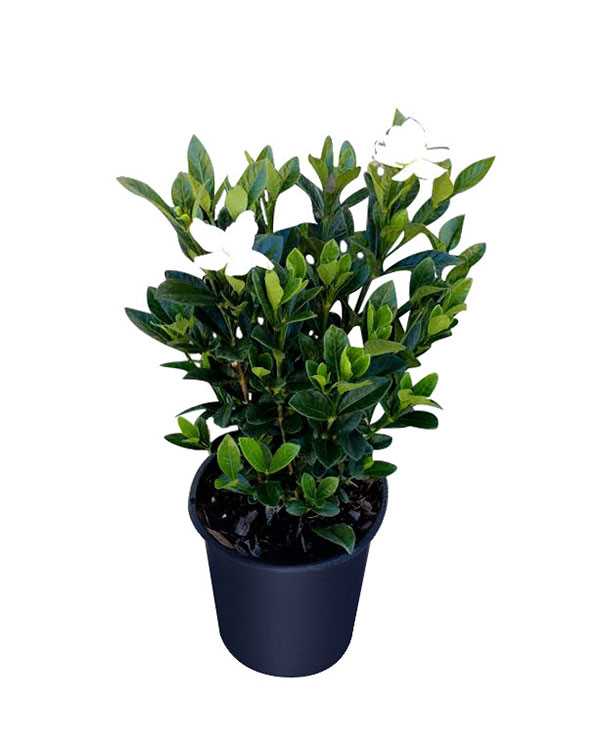

Gardenia Jasmine plants need plenty of bright, indirect sunlight to grow and produce flowers. Choose a location that receives at least 4-6 hours of sunlight each day. However, be cautious of direct afternoon sunlight, as it can scorch the leaves and flowers.
2. Temperature
Gardenia Jasmine plants prefer warm temperatures between 65°F and 75°F (18°C-24°C). Avoid placing your plants in areas with extreme temperature fluctuations or drafts, as this can stress the plant and affect its overall health.
3. Humidity
Gardenia Jasmine plants thrive in high humidity environments. If you live in a dry climate, consider using a humidifier or placing a tray of water near the plant to increase the surrounding humidity level. Avoid placing the plant near heating or cooling sources that can dry out the air.
4. Soil Drainage
Gardenia Jasmine plants require well-draining soil to prevent waterlogged roots. Choose a location with soil that drains well and doesn’t retain excess moisture. If the soil in your chosen location has poor drainage, consider amending it with organic matter such as compost or perlite.
5. Shelter from Wind
Gardenia Jasmine plants can be sensitive to strong winds, which can lead to leaf damage or the plant being uprooted. Choose a location that provides some shelter, such as near a fence, wall, or other plants, to protect your Gardenia Jasmine from strong gusts of wind.
6. Proximity to Water Source
Consider the proximity of your chosen location to a water source. Gardenia Jasmine plants require regular watering, so having easy access to a water source will make it convenient for you to provide them with the moisture they need.
By considering these factors when choosing the location for your Gardenia Jasmine, you can create an ideal growing environment for this beautiful and fragrant plant.
Soil Preparation for Gardenia Jasminoides
Proper soil preparation is crucial for the successful growth and health of gardenia jasminoides, commonly known as gardenia or cape jasmine. This fragrant evergreen shrub requires a specific type of soil to thrive. Follow these steps to prepare the ideal soil for your gardenias:
1. Choose the Right Soil Type
Gardenia jasminoides prefers slightly acidic soil with a pH range of 5.0 to 6.0. Acidic soil helps gardenias absorb essential nutrients more effectively. Additionally, the soil should be well-draining and enriched with organic matter.
2. Test the Soil pH
Before planting gardenias, it’s important to test the soil pH to ensure it falls within the desired range. You can use a soil testing kit available at gardening centers or send a soil sample to a laboratory for more accurate results.
3. Amend the Soil
If the soil pH is too high, meaning it is alkaline, you’ll need to amend it to make it more acidic. To lower the pH, you can add organic matter such as compost or well-aged manure. Alternatively, you can use sulfur-based products specifically designed to acidify the soil.
It’s essential to thoroughly mix the amendment materials into the soil to ensure even distribution and integration. Use a garden fork or a tiller to turn over the soil and incorporate the amendments.
4. Improve Drainage
Gardenias cannot tolerate waterlogged soil, as it can lead to root rot and other diseases. To improve drainage, incorporate coarse sand or perlite into the soil. These materials will help create air pockets and allow excess water to drain away more efficiently.
5. Add Organic Matter
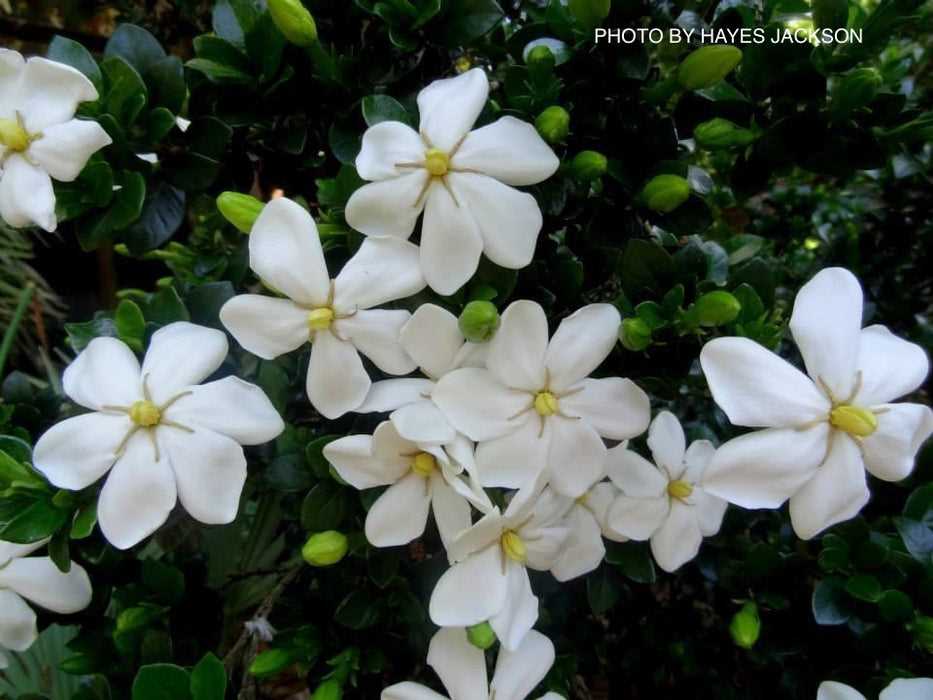

Enrich the soil with organic matter such as compost, well-rotted leaves, or aged manure. Organic matter improves the soil structure, enhances moisture retention, and provides essential nutrients for the gardenia plants.
6. Mulch the Soil Surface
After planting the gardenias, apply a layer of organic mulch around the plants. Mulch helps regulate soil temperature, retain moisture, and suppress weed growth.
7. Regular Soil Maintenance
Once the soil is properly prepared, it’s important to maintain its fertility and moisture levels. Regularly monitor the pH levels and amend the soil if necessary. Additionally, provide consistent watering to keep the soil evenly moist but not waterlogged.
By following these soil preparation guidelines, you can create an ideal growing environment for your gardenia jasminoides plants and ensure their healthy growth and abundant blooms.
Planting Gardenia Jasmine: Step-by-Step Guide
Gather the necessary materials
Before planting your gardenia jasmine, make sure you have the following materials:
- Gardenia Jasminoides plant
- Well-draining pot or garden bed
- High-quality potting mix or garden soil
- Compost or organic matter
- Shovel or trowel
- Watering can or hose
Choose the right location
Gardenia jasmine thrives in full sun to partial shade, so choose a location that receives at least 4-6 hours of direct sunlight per day. It’s also important to select a spot with well-draining soil to prevent waterlogged roots.
Prepare the soil
Whether you’re planting in a pot or a garden bed, it’s crucial to prepare the soil before planting. Mix the potting mix or garden soil with compost or organic matter to improve drainage and provide essential nutrients.
Dig a hole
Dig a hole that is twice as wide and just as deep as the root ball of your gardenia jasmine plant. This will allow the roots to grow and spread easily.
Plant the gardenia jasmine
Place the plant in the hole, making sure that the top of the root ball is level with or slightly above the soil surface. Backfill the hole with the soil mixture, gently pressing it down to eliminate air pockets.
Water thoroughly
After planting, water the gardenia jasmine thoroughly to settle the soil and ensure good root-to-soil contact. Keep the soil evenly moist but not waterlogged, as gardenia jasminoides prefers slightly moist conditions.
Mulch the area
Apply a layer of organic mulch around the base of the plant to help conserve moisture, suppress weeds, and regulate soil temperature.
Monitor and care for your plant
Regularly monitor the moisture level of the soil and water when needed. Fertilize the gardenia jasmine with a balanced fertilizer according to the package instructions. Prune the plant to maintain its shape and remove any dead or damaged branches. Protect the plant from extreme temperatures and provide some shade during hot summer months if necessary.
In conclusion
By following these step-by-step instructions, you’ll be well on your way to successfully planting and caring for your gardenia jasmine. Enjoy the beautiful blooms and the delightful fragrance that this plant has to offer!
Watering and Fertilizing Gardenia Jasminoides
Watering
Gardenia Jasminoides plants require regular watering to maintain their health and beauty. Proper watering techniques are essential for these plants, as they have specific needs for moisture.
- It is recommended to water gardenias deeply and thoroughly, allowing the water to penetrate the root zone.
- Water the plants at the base, avoiding direct contact with the foliage to prevent fungal diseases.
- Check the soil moisture before watering. Stick your finger about an inch into the soil, and if it feels dry, it’s time to water.
- Avoid overwatering, as it can lead to root rot and other problems. However, ensure that the soil is consistently moist, as gardenias do not tolerate drought.
- During hot and dry periods, increase the frequency of watering to keep the soil evenly moist.
Fertilizing
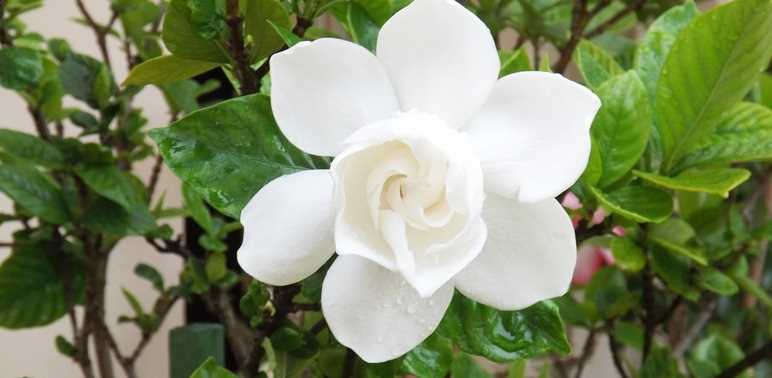

Fertilizing gardenias is crucial to promote healthy growth and vibrant blooms. They have specific nutrient requirements that should be met through regular fertilization.
- Use a slow-release, balanced fertilizer specifically formulated for acid-loving plants, such as a rhododendron or azalea fertilizer.
- Apply the fertilizer according to the package instructions, typically in early spring and again in midsummer.
- Avoid applying fertilizer directly to the foliage or stems, as it can burn the plant. Instead, sprinkle it around the base of the plant and water it in thoroughly.
- Monitor the plant’s response to the fertilizer. If the leaves start to yellow or the plant seems unhealthy, adjust the fertilization schedule or amount accordingly.
By following proper watering and fertilizing practices, you can ensure that your Gardenia Jasminoides plants thrive and reward you with their beautiful flowers and exquisite fragrance.
Pruning and Trimming Gardenia Jasmine
Gardenia jasminoides, commonly known as Gardenia Jasmine, is a beautiful flowering plant that requires regular pruning and trimming to maintain its shape and promote healthy growth. Pruning is the process of selectively removing certain parts of the plant, such as branches or leaves, while trimming involves cutting back the overall size of the plant.
Why Prune Gardenia Jasmine?
Pruning Gardenia Jasmine is essential for several reasons:
- Promotes airflow: Pruning opens up the plant, allowing better airflow and reducing the risk of diseases.
- Controls size: Regular pruning helps keep the Gardenia Jasmine within a desired size and shape, preventing it from becoming overgrown.
- Encourages new growth: Pruning stimulates new growth, resulting in a denser and more compact plant.
- Removes dead or damaged branches: Pruning helps get rid of any dead or diseased branches, improving the overall health of the plant.
When to Prune Gardenia Jasmine?
The best time to prune Gardenia Jasmine is in the late winter or early spring, just before the plant starts its spring growth. Pruning during this time allows the plant to recover and produce new growth before the flowering season begins. Avoid pruning during the fall or when the plant is blooming, as it may disrupt the flowering process.
How to Prune Gardenia Jasmine?
To prune Gardenia Jasmine, follow these steps:
- Start by sterilizing your pruning tools with rubbing alcohol to prevent the spread of diseases.
- Identify any dead, diseased, or damaged branches and remove them by making a clean cut just above the branch collar.
- Thin out the interior of the plant by selectively removing some of the older branches to improve airflow and light penetration.
- Take care not to remove more than one-third of the plant’s total foliage to avoid stressing the plant.
- Make each cut just above a healthy leaf node or bud, angling the cut slightly away from the plant to encourage proper healing.
- Use sharp pruning shears or loppers to make clean cuts, as jagged cuts can lead to disease entry points.
Trimming Gardenia Jasmine
In addition to pruning, regular trimming is necessary to maintain the desired size and shape of the Gardenia Jasmine. Trimming involves removing the tips of the branches to promote branching and achieve a more compact growth habit.
To trim Gardenia Jasmine, follow these guidelines:
- Trim after flowering: Wait until after the plant has finished blooming to trim the branches. This ensures that you don’t accidentally remove any flower buds.
- Use sharp pruning shears: Make clean cuts just above a leaf node or bud to encourage new growth in the desired direction.
- Trim lightly: Avoid removing more than one-third of the branch length to avoid stressing the plant.
- Regular maintenance: Trim Gardenia Jasmine on a regular basis to prevent the plant from becoming overgrown and to maintain its shape.
By regularly pruning and trimming your Gardenia Jasmine, you can promote healthy growth, maintain its shape, and enjoy the beauty of its fragrant blooms for years to come.
Common Pests and Diseases of Gardenia Jasminoides
Gardenia jasminoides is a popular and beautiful flowering plant that is prized for its fragrant blooms and glossy green leaves. However, like any plant, gardenia jasminoides is susceptible to certain pests and diseases. It is important to be aware of these common issues so that you can take the necessary steps to prevent and treat them.
Pests
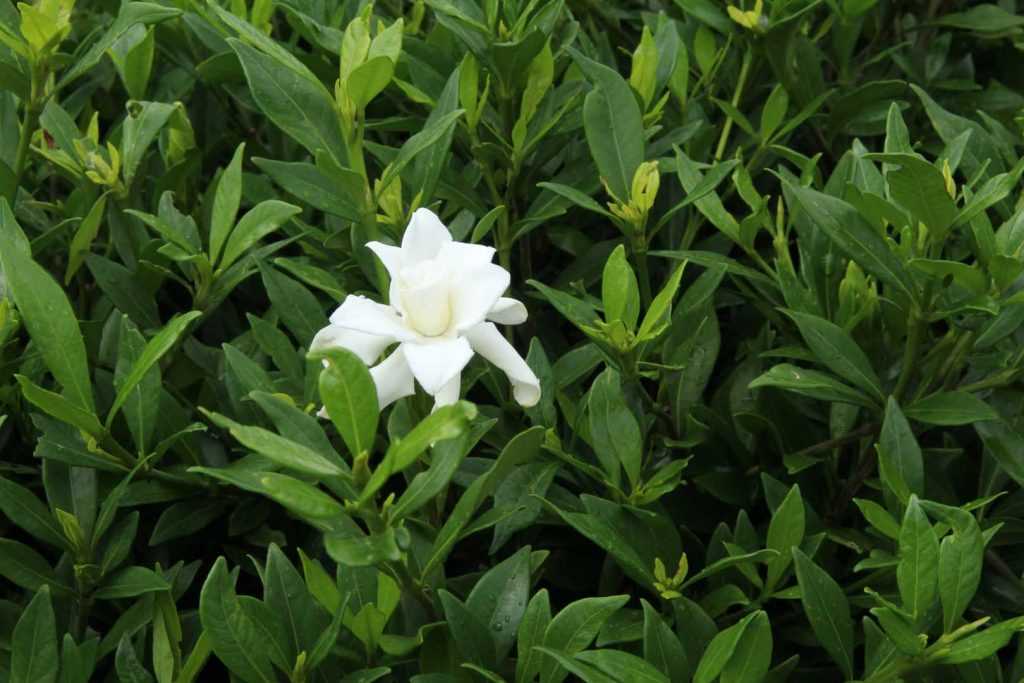

- Whiteflies: These small, flying insects feed on the sap of gardenia plants, causing yellowing and wilting of the leaves. They also leave behind a sticky residue called honeydew, which can attract ants.
- Aphids: Aphids are small, soft-bodied insects that suck sap from the leaves, buds, and stems of gardenia plants. They can cause distortion, yellowing, and curling of the leaves.
- Scale insects: Scale insects are small, immobile pests that feed on the sap of gardenia plants. They can cause yellowing, wilting, and stunted growth.
- Mealybugs: Mealybugs are small, soft-bodied insects that feed on the sap of gardenia plants, causing yellowing, curling, and stunted growth. They leave behind a white, cottony residue.
- Spider mites: Spider mites are tiny, eight-legged pests that are difficult to see with the naked eye. They feed on the underside of the leaves, causing yellowing, bronzing, and webbing.
Diseases
- Leaf spot: Leaf spot is a fungal disease that causes circular, brown spots on the leaves of gardenia plants. The spots may have a yellow halo and can merge together, causing wilting and defoliation.
- Powdery mildew: Powdery mildew is a fungal disease that appears as a white or gray powdery coating on the leaves, stems, and flowers of gardenia plants. Infected leaves may curl and drop prematurely.
- Root rot: Root rot is caused by overwatering or poorly-drained soil, which leads to the roots becoming waterlogged and rotting. Affected plants may exhibit wilting, yellowing, and stunted growth.
- Bacterial leaf spot: Bacterial leaf spot causes water-soaked lesions on the leaves, which may turn brown and progress to dark, sunken spots. Infected leaves may eventually drop off.
- Botrytis blight: Botrytis blight is a fungal disease that causes gray or brown fuzzy growth on the flowers, buds, and stems of gardenia plants. Infected flowers may become mushy and turn brown.
Preventing and managing pests and diseases in gardenia jasminoides involves practicing good cultural care, such as providing proper watering, maintaining good air circulation, and removing and disposing of infected plant material. In some cases, chemical treatments may be necessary, but it is important to choose products specifically labeled for use on gardenia plants and follow the instructions carefully.
By being vigilant and proactive in caring for your gardenia jasminoides, you can minimize the risk of pests and diseases and enjoy the beauty of this lovely plant.
Troubleshooting: Common Issues and Solutions for Gardenia Jasmine
1. Yellowing Leaves
One common issue with gardenia jasmine plants is the yellowing of leaves. This usually occurs due to nutrient deficiency, specifically iron or magnesium deficiency. In order to address this problem, you can:
- Apply iron chelate or Epsom salt to the soil, following the recommended dosage.
- Use a fertilizer specifically formulated for acid-loving plants to provide the necessary nutrients.
- Ensure that the soil is well-draining, as waterlogged soil can also lead to yellowing leaves.
- Check for any signs of pests or diseases that may be causing the issue, such as mealybugs or fungal infections.
2. Leaf Drop
Another common problem with gardenia jasmine is leaf drop. This can be caused by several factors, including:
- Overwatering: Gardenias prefer moist but not waterlogged soil. Make sure to water them properly and allow the soil to dry slightly between waterings.
- Underwatering: On the other hand, if the soil becomes too dry, the plant may also shed its leaves. Ensure that the plant is receiving adequate water.
- Temperature stress: Gardenias are sensitive to temperature changes. Excessive heat or cold drafts can cause leaf drop. Keep the plant in a stable environment with temperatures between 65-75°F (18-24°C).
- Lack of humidity: Gardenia jasminoides prefer high humidity levels. Use a humidifier or place a tray filled with water near the plant to increase humidity.
3. Bud Drop
Gardenia jasmine plants are known for their fragrant flowers, but sometimes the buds may drop before they have a chance to fully bloom. The following issues can lead to bud drop:
- Environmental stress: Extreme temperatures, dry air, or sudden changes in light can cause bud drop. Maintain a stable environment for the plant.
- Inadequate light: Gardenias require bright, indirect light to bloom properly. Ensure that they are receiving enough light throughout the day.
- Improper pruning: Pruning at the wrong time or in the wrong way can result in bud drop. Follow the recommended pruning guidelines for gardenia jasmine plants.
- Improper fertilization: Using a high-nitrogen fertilizer can promote leaf growth at the expense of flower buds. Use a balanced fertilizer with a lower nitrogen content.
4. Pest Infestation
Gardenia jasmine plants can be susceptible to various pests, including aphids, scale insects, mealybugs, and whiteflies. If you notice signs of infestation such as sticky residue, yellowing leaves, or distorted growth, take the following steps:
- Inspect the plant regularly for any signs of pests.
- Use insecticidal soap or neem oil to control smaller infestations.
- If the infestation is severe, consider using a systemic insecticide or seeking professional help.
- Isolate infested plants to prevent the pests from spreading to other plants.
| Issue | Cause | Solution |
|---|---|---|
| Yellowing Leaves | Nutrient deficiency or waterlogged soil | Apply iron chelate or Epsom salt, use an acid-loving plant fertilizer, improve drainage |
| Leaf Drop | Over or underwatering, temperature stress, lack of humidity | Proper watering, stable temperature, increase humidity |
| Bud Drop | Environmental stress, inadequate light, improper pruning, improper fertilization | Maintain stable environment, provide sufficient light, follow pruning guidelines, use balanced fertilizer |
| Pest Infestation | Aphids, scale insects, mealybugs, whiteflies | Regular inspection, use insecticidal soap or neem oil, isolate infested plants |
Q&A:
What is Gardenia Jasmine?
Gardenia Jasmine, also known as Gardenia jasminoides, is a flowering plant native to China and Japan. It is a popular plant for its beautiful flowers and sweet fragrance.
How do I grow Gardenia Jasmine?
To grow Gardenia Jasmine, start by selecting a well-draining pot and using a high-quality potting mix. Plant the gardenia in a location with partial sun and ensure the soil is kept consistently moist. Provide regular fertilization and prune the plant to maintain its shape and encourage growth.
What are the ideal growing conditions for Gardenia Jasmine?
Gardenia Jasmine thrives in warm and humid climates. It prefers a location with bright, indirect light and temperatures between 65-75°F (18-24°C). The soil should be slightly acidic with good drainage. Regular watering and misting can help recreate the plant’s preferred humidity.
How often should I water Gardenia Jasmine?
Gardenia Jasmine should be watered regularly to keep the soil consistently moist, but not waterlogged. Check the soil moisture level by inserting your finger about an inch into the soil. If it feels dry, it’s time to water. Avoid overwatering, as it can lead to root rot.
Why are the leaves of my Gardenia Jasmine turning yellow?
Yellowing leaves on Gardenia Jasmine can be caused by various factors, including nutrient deficiencies, overwatering, underwatering, or pests. Check the soil moisture level and adjust watering accordingly. Ensure the plant is receiving adequate light and proper nutrition. If pests are the issue, treat the plant with an appropriate insecticide.
How can I propagate Gardenia Jasmine?
Gardenia Jasmine can be propagated through hardwood or softwood cuttings. Take a 4-6 inch cutting from a healthy plant, remove the lower leaves, and dip the cut end in rooting hormone. Plant the cutting in a well-draining potting mix and keep it warm and moist until roots develop. Once rooted, the cutting can be treated as a mature plant.
Video:
How To Make Gardenia Plant Produce More Buds And Blooms All Year Round







